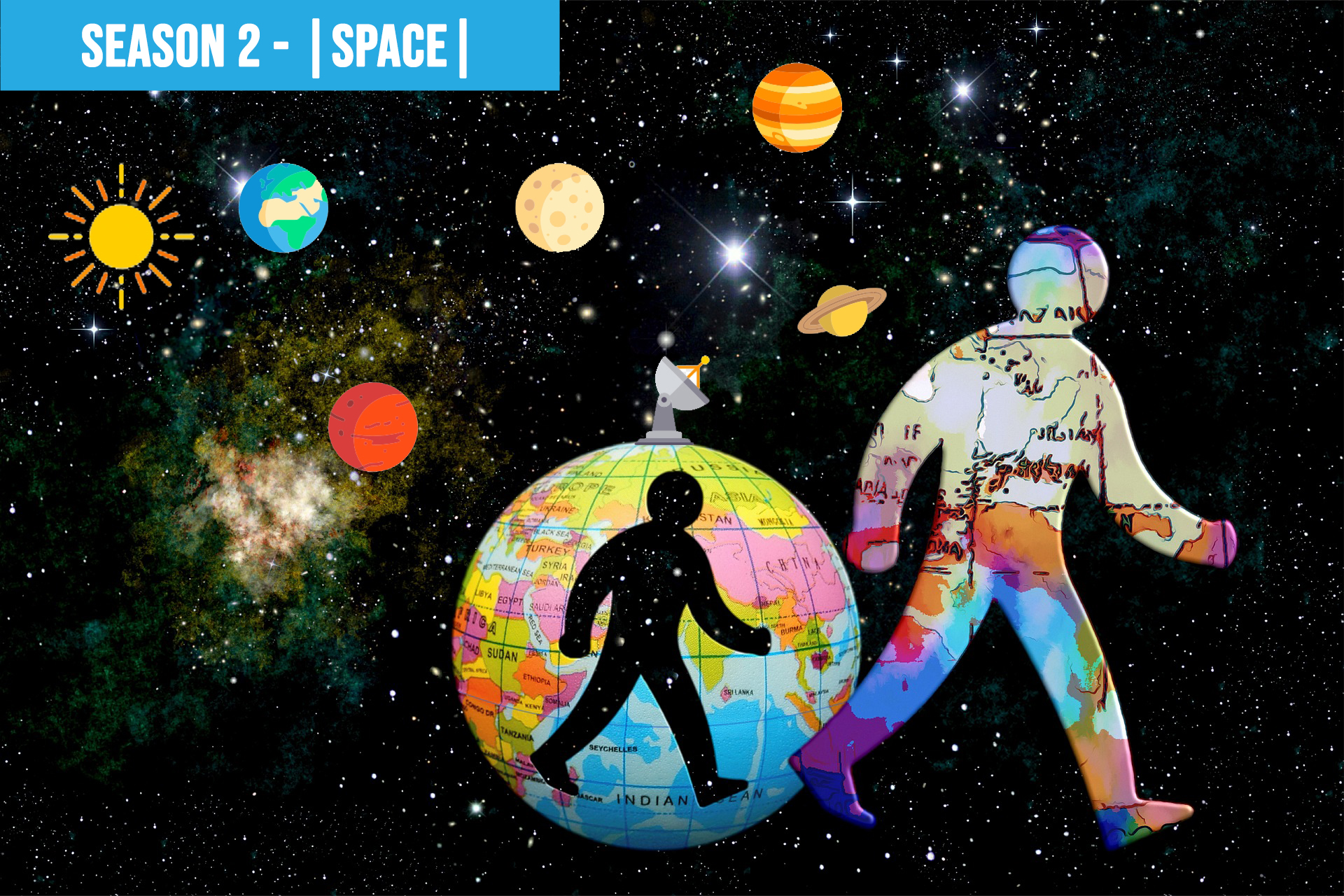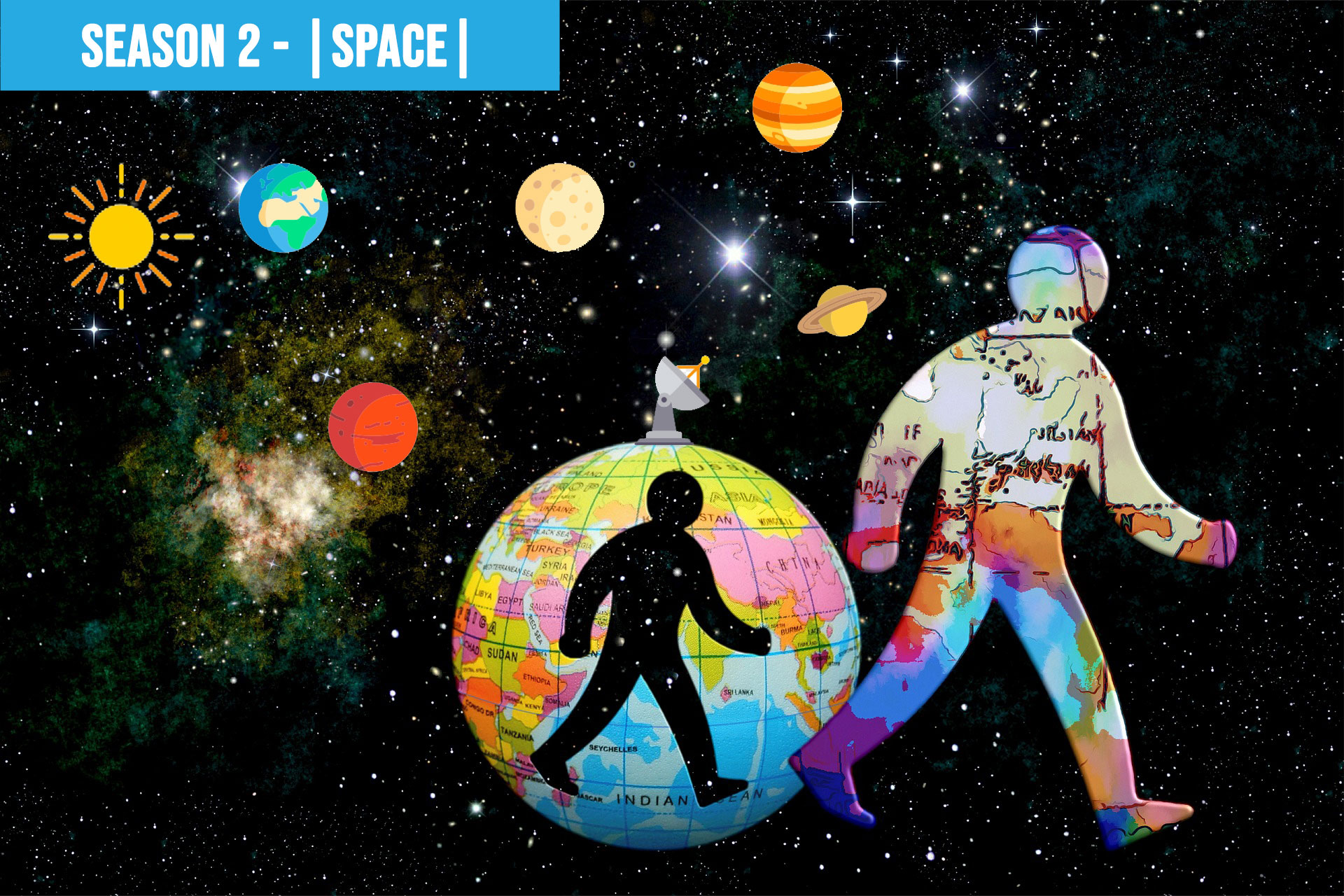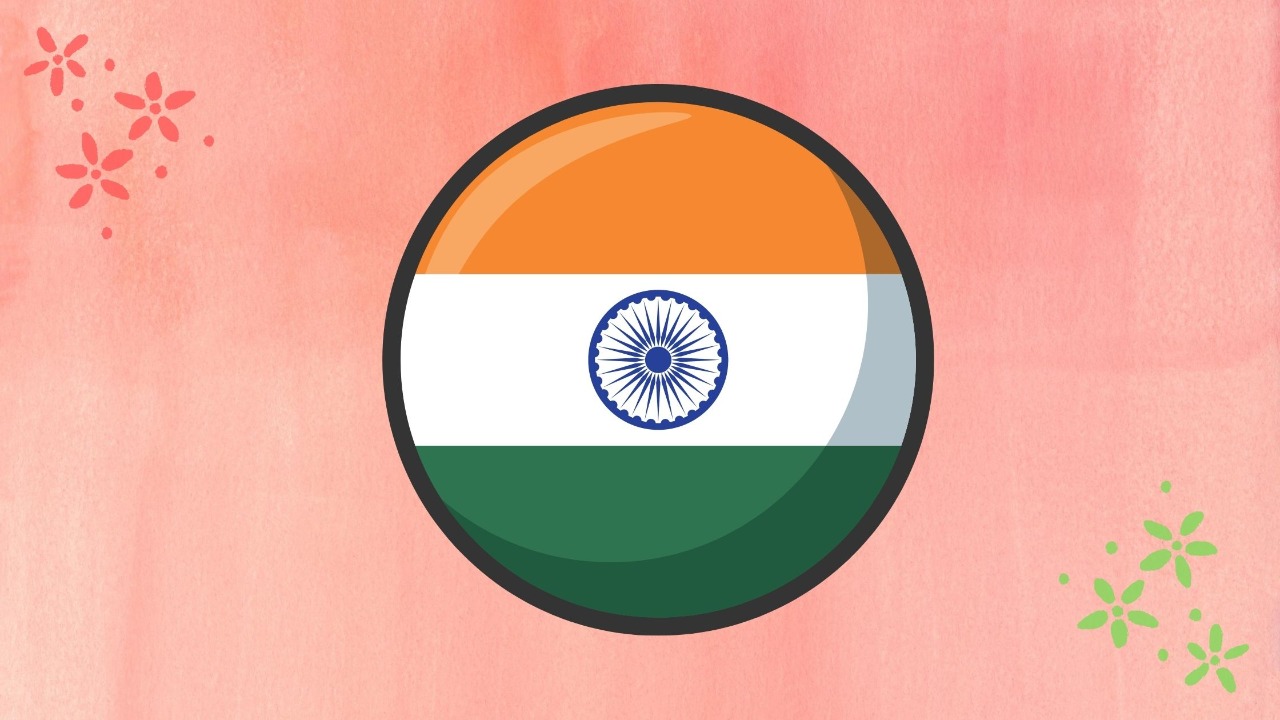020: Universe and Black Holes – Part 1
Dr Madhusudan,
Assistant Director of Nehru Planetarium, Bengaluru
UNIVERSE AND BLACKHOLES-PART 1
[0.01] {Background Music}
[0.08] Siyona: Hello there! Welcome back to another episode in our space series here at Little Mind Chats. Minds are little. Not our Thoughts. I’m your host Siyona. We had two amazing episodes on our Solar System. I really hope you have listened to them. Today, we’ll be travelling beyond our solar system. We will be exploring some interesting parts of our universe. This part of science is called astrophysics. This is what gives a lot of movies like Star Wars, Interstellar all their cool ideas. Yes, it might be hard to understand for little minds like ours until we hear it from someone like a passionate educationist excellent with kids and loaded with information about our universe. Today we have with us, the assistant director of Nehru planetarium, Dr. Madhusudan who has been involved in all educational related activities at the planetarium here in Bangalore.
[1.18] Siyona: Hello Dr. Madhusudan. Welcome to my podcast. How are you doing today?
[1.24] Dr. Madhusudan: Yeah. I’m fine and good. And I hope you are feeling good too.
[1.30] Siyona: Yeah, I’m feeling good too. Thanks. “We are very curious to know about you first. Can you please tell us something about yourself?”
[1.42] Dr. Madhusudan: I see myself as a teacher. I teach science and mathematics and of course astronomy, astrophysics included and I am teaching the kids from age group of 5 to post graduation (master’s degree in science). And these programmes in the planetarium are mainly for children who are deeply interested in taking a career in science, research or if they would like to become scientist and if you can come to planetarium week after week, so this is a place to come and this is where I teach. In addition to teaching, I also produce planetarium shows. I’m sure you would have come to planetarium sometime to watch the show. If not, I invite you to come sometime and join us here. So, I write the script and then I’m also involved in making visuals for that, various part of planetarium show making. And I also work with teachers. Teachers of science at different levels. So that’s my introduction.
[2.46] Siyona: I see now this way it feels more interested to come to your planetarium. And it sounds fun seeing all these shows and everything. And yes, I have been to a planetarium when I was very little. So, let’s move to the first question?
[3.05] Dr. Madhusudan: Yeah. I look forward to that.
[3.07] Siyona: “What exactly is the cosmos? Is it different from space or universe?”
[3.14] Dr. Madhusudan: Oh goodness. That is the toughest question that I always say if somebody asks me this. Because everything that we see around us is part of cosmos. And cosmos and universe are one and the same. Universe is a less poetic word and cosmos is a very poetic way of putting across to include all the things that we are capable of seeing and all the things that exist but we still haven’t seen they all together make up this cosmos or the universe. So, they are one and the same.
[3.53] Siyona: Oh. Okay. “But what is Nebula?” I have heard this is where new stars are born. I’m amazed how?
[4.04] Dr. Madhusudan: Oh ok. That’s a very fundamental question. Like you rightly said, a nebula is a place where stars take birth. But not all nebulae give birth to stars. They are not stellar nurseries as they are popularly called. Some of the nebulae, these are huge conductions of gas and dust. And when I say huge, I cannot compare it to anything that to be seen in our day to day life here on earth. Because a nebula is much, much, much larger than planet earth. And sometimes nebulae can be much bigger than several times the size of the solar system. I think in the previous podcast (episode) Mr. Guruprasad have told you about the vastness of the solar system. Some of the nebulae can be much, much bigger than that. Just come to think of it. You have a huge collection of gas and dust and what not and the size of that is as big as our solar system or many times the size of our solar system. So, this is one kind of nebulae.
[5.15] Dr. Madhusudan: The nebulae are of basically two kinds. One nebula is the gas and other materials which are thrown away by massive stars during the end stages of their lifetime. Okay?
[5.33] Siyona: Okay.
[5.34] Dr. Madhusudan: Now I have to tell you what we mean by lifetime of a star. When do you say that a star is living? You know that a star is an object which produces its own energy. For the time that a star can produce its own energy, we call it a star. And there are times when every star comes to a point when it can no more produce energy. And there are many ways in which a star ends at that point of time. So, one of the ways in which they end is by blowing away their outer covering which is mostly composed of gas and this outer covering is what becomes a nebula. Okay. This is one kind of nebula where towards the end stages of star, a gas that uncompressed the star is blown away.
[6.28] Dr. Madhusudan: Then there is another kind of nebulae, the very, very, very huge. I’m sure you would have heard about this constellation called Orion?
[6.39] Siyona: Yes, I have.
[6.40] Dr. Madhusudan: Orion is a winter constellation and it has a majestic presence in the sky. If you were to go after the sunset during the December or January in Bangalore. Now, in the middle of this constellation you have three stars which are called the belt of the Orion. Orion is in the Greek mythology is a hunter by the way. So, the hunter has a belt with a dagger and the belt region you’ll find just below that a fuzzy star. It looks like a fuzzy star. Seeing through a pair of binoculars which are fairly powerful, you will immediately see that it’s not a point like object, like a star but it is spread out. Now this seeing through some more powerful telescope will show you that this Orion nebula, it’s actually called Orion nebula, it stands a huge size, a huge volume and in fact, a huge collection of gas and dust, new stars are born. And these stars are born very frequently. So, you have nebulae of this kind also. Okay? So, these are the two types of nebulae. Basically, they are gas and dust. But one type of nebulae comes from the death of a star. Meaning when they stop producing energy. And another kind of nebulae are stellar nurseries which give birth to stars. Siyona?
[8.16] Siyona: Yeah.
[8.17] Dr. Madhusudan: Did you find it interesting that nebula is a result of death of some stars and nebula is also the cause of the birth of some stars.
[8.28] Siyona: And it’s also very, very mind boggling to get to know that some nebulae’s can be bigger than our solar system. I mean” how big is our solar system? And how much bigger can a nebula be?” And also, when I was watching those videos, called its Aumsum Time on YouTube, it is said that stars in their core they have like few something, something and then there’s force coming from inside and force coming from outside. And they both keep the star in its shape. But then once the fuel of the core of the star runs out, it will explode and become a nebulae.
[9.17] Dr. Madhusudan: Exactly, you are right. Okay so how big is the solar system you ask? Quite a lot of big question, okay big in course. So, solar system is very, very huge. In astronomy, distances are expressed in units that we are not very familiar in our day to day life. Still when you have to tell somebody how far away is your house from let’s say that international airport, so you might say its about 15km or 20km and so on. Right?
[9.57] Siyona: Yeah.
[9.58] Dr. Madhusudan: So, kilometre is a unit of distance that we are very familiar with. If you have much smaller distances, say for example you want to tell how big the table on which you work? And you may say it is one and half metres. So, metre is again a unit of distance. And when things become much, much bigger, the distance should become larger, kilometre is not a very easy unit to use. Say for example the distance between the earth and the sun. If I were to write a number like 150 followed by 6 more zeroes and say that many kilometres, you will say, what does this mean? How big is this? I can’t say how big this because there is nothing as big as that around us on earth. Therefore, we have no feel for such numbers. So, what astronomers have done is to introduce a unit of distance known as light year. Okay? So, they expressed distance in terms of how much time does light takes to go from one point to another point. Now this is possible only because light always travels at the same speed. No matter in which part of the cosmos it is travelling. At least as far as we know. Okay?
[11.35] Siyona: Mmm ha.
[11.36] Dr. Madhusudan: Now, if you are travelling by a vehicle on Bangalore road, you know that your speed cannot be constant. Okay? If there is a traffic and then there are pot holes because of which you apply brakes and sometimes you accelerate. But light is not like that. It is always going to travel at the same speed. So, thanks to this particular property of light. if somebody asks you how far away the sun is situated from the earth, instead of saying a hundred and fifty million kilometres, you can say it is just 8 ½ light minutes away. What this means is a ray of light which left the sun surface 8 ½ minutes back has struck you just now. Okay? So, all the light that you see from the sun is 8 ½ minutes old.
[12.31] Siyona: Oh.
[12.33] Dr. Madhusudan: Similarly, if somebody ask you how far away is the moon? It is one thing to say 4,00,000 kilometres. I can’t tell you how big is 4lakh kilometre is. I can’t show you something which is 4lakh kilometre long. But I can tell you light takes just a little over 1second to reach from the moon to the earth.
[12.56] Siyona: That is….
[12.57] Dr. Madhusudan: All the light that comes from the moon to earth is about one second old. All the light that comes from the sun to the earth is always about 8 ½ minutes old. Now, the nearest star to earth, light takes something like 4 and a quarter year to reach us. Okay?
[13.22] Siyona: Ok
[13.23] Dr. Madhusudan: Do you get the sense the how large the distance is?
[13.26] Siyona: Yeah.
[13.28] Dr. Madhusudan: Now coming to the question, how big is the solar system. This is a tough question to answer Siyona, because how do you draw a boundary and say where the solar system ends. Okay? Now if you get into the planetarium campus, I can tell you this is the beginning point of the planetarium campus and this is the end point of the planetarium campus. Because we have a fence that runs around. There is no such fence for the solar system. Therefore, it’s difficult to answer how big the solar system is. But according to some estimates, we can say that light which leaves the sun now to go to the edge of the solar system as we know, it will take something like 1 ½ years or so.
[14.21] Siyona: Oh(surprised)
[14.22] Dr. Madhusudan: It’s pretty big.
[14.24] Siyona: That is ginormous. Does that mean that when it’s sunset the sun has already set 8 ½ minutes ago and then after that we get the last ray and then it seems like the sun is setting?
[14.45] Dr. Madhusudan: Oh goodness! You have hit the nail on the head. You are absolutely right. When you actually see the last bit of the sun’s disc going below the horizon, sun has already gone below the horizon 8 ½ minutes earlier. Okay?
[15.01] Siyona: Okay.
[15.02] Dr. Madhusudan: But there is a small twist in this. Sun would have actually gone not 8 ½ minutes earlier but something like 12 minutes earlier. You know why?
[15.14] Siyona: Why?!
[15.15] Dr. Madhusudan: The addition of three minutes is because the earth atmosphere, you know that the earth has an atmosphere? Which is a collection of gases?
[15.26] Siyona: Yeah.
[15.27] Dr. Madhusudan: The air we breathe is part of the atmosphere. This atmosphere is pretty thick. Now, when the sun has gone below the horizon, what this atmosphere does is, it brings the light rays coming from the sun. So, even when though sun has gone actually below the horizon, you will continue to see the sun for three minutes more because the light rays bent by the earth atmosphere will be reaching you.
[15.57] Siyona: Oh!! That’s what it’s like?!
[16.01] Dr. Madhusudan: Yeah. So, first of all the sun’s light takes 8 ½ minutes and then you can add another three minutes to that because, the sun is visible for three minutes more than it should be.
[16.16] Siyona: Yeah. Well, that is amazing!
[16.20] Dr. Madhusudan: Yeah.
[16.22] Siyona: “Light is the colour of night. Does that mean the universe is always in night mode?”
[16.30] Dr. Madhusudan: Universe is in the night mode? It is in the night mode predominantly. But first of all, I need to tell you why? For example, earth is, half the earth is illuminated by the sunlight. Hhmm. First of all, sunlight is reaching everywhere. Secondly, if you look at the sky, in the direction of the sun, now you should be able to see light only where the sun is. If we look, say for example the sun is in the east. Okay?
[17.14] Siyona: Okay.
[17.15] Dr. Madhusudan: Now the sky in the eastern direction will be illuminated because of the sunlight reaching us. Now at that moment, if I were to turn to left and look at say in the direction of north, If I look at the sky in the direction of north, I should not be seeing any sunlight at all. But the sky is illuminated even in the north. The sky is illuminated even in the south. This illumination is because the earth has an atmosphere. And this atmosphere contains gases, it contains dust particles and what not! And all the pollutants that we put up through our industries, through the vehicles we drive, everything is there in our atmosphere. What they do is they scatter light. Even though the sunlight is in one direction, the entire sky is illuminated on the earth because of the scattering of light by these particles. And Siyona, you will be surprised if you were to go to the moon.
[18.14] Dr. Madhusudan: Now a days, people talk about tourism, space tourism and moon tourism and things like that.
[18.21] Siyona: Yeah. We spoke about this with Dr. Guruprasad.
[18.24] Dr. Madhusudan: May be. I will not live long enough to see that day. But you are definitely going to see in your lifetime. If you were to go the moon as a tourist, remember my words, you can see the sun shining brightly in the moon’s sky. But if you look a little away from the place where the sun is, the sky as seen from the moon will be pitch dark.
[18.50] Siyona: Huh!! (Surprised)
[18.51] Dr. Madhusudan: Absolutely dark. Okay? You can see the stars shining there and you can see planets and if there is a comet, you can see the comet. You can see all the celestial objects that you can with your naked eye. Even though the sun is shining brightly in the sky as seen from the moon.
[19.07] Siyona: Wow. That must be such a fascinating thing to see.
[19.12] Dr. Madhusudan: The floods of light that we see here is because of scattering. At the moment you go to space, you leave this earth atmosphere, which is just about 300 kilometres thick, Okay? You will find that the space is pitch dark because there are no gas particles, there are no dust particles to scatter away light. So, that’s the reason why the colour of the universe in dark. Because it is telling you indirectly that most of the space does not contain matter at all to scatter light.
[19.54] Siyona: Oh. That’s Why!
[19.57] Dr. Madhusudan: So, much of space is more or less vacuum you can say.
[20.01] Siyona: Okay.
[20.02] Dr. Madhusudan: Yeah.
[20.03] Siyona: So, you know how I spoke about Its Aumsum Time. In one of those videos, Aumsum, the funny character was asked why is space so black? And he was like because somebody forgot to pay the electricity bill and they said that’s not it.
[20.20] Dr. Madhusudan: (laughs) It’s a nice joke.
[20.22] Siyona: Yeah. It is indeed. And then this guy explained the other things that well it’s not because somebody forgot to pay the electricity bill, that’s because light from distant stars has not reached us yet. Because light has like a particular speed limit.
[20.43] Dr. Madhusudan: That’s right. So yeah this could be lot of stars which are so far away from us. Why do you think that they have not reached earth? The earth itself is something like roughly 4 ½ billion years old. So, if you have some object which is so far away, that it takes light more than5billion years to reach us and light from those stars would not have reached us at all still right?
[21.13] Siyona: Yeah.
[21.15] Dr. Madhusudan: So, in a way that is also right. So, there could be many, many objects whose light we have not yet received at all. But all said and done the universe is pitch dark because it has no material in most part of it to scatter away light and that is the only way by which you can illuminate space.
[21.36] Siyona: Okay.
[21.37] Dr. Madhusudan: Hhmm.
[21.38] Siyona: Well, I am sorry to be bringing you all back to earth. But, it’s time for us to take a break until Wednesday the 26th where we will continue this interesting and educative conversation with Dr. Madhusudan.
[21.53] Siyona: Hope you remember what’s happening the next Sunday! It’s the judgment of “Grow Your Greens”. I hope you are already with your pictures of your excitingly sprouted greens and tender saplings for this month’s competition “Grow Your Greens”. I’m sure you must have enjoyed growing them all these days. Do send me the pictures by Friday the 28th of August. You could mail them to me at Siyona@littlemindchats.com. Don’t forget to follow on Instagram, Twitter and Facebook. And yes, do share my podcast with your friends. If you like it, they might like it too!
[22.35] Siyona: Thanks a ton for listening! Bye.
Other Interesting Episodes
08 Aug-20. by Admin
Solar System – Part 1
14 Aug-20. by Siyona
Independence Day Special 2020
No Comment Found..










